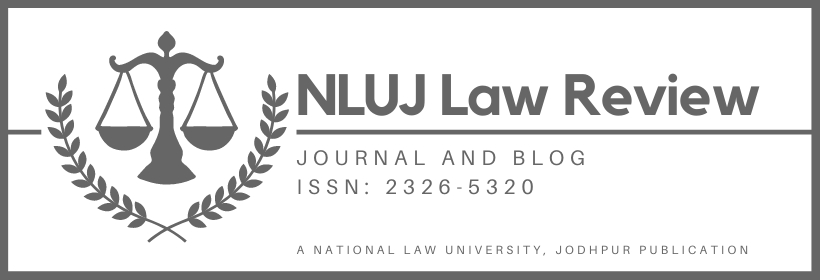Intellectual property (“IP”) laws have almost always tried to satisfy and balance two competing and almost contradictory social interests. On the one hand, they seek to ensure that artists, innovators and creators are rewarded for their creations by giving them the exclusive right to commercialise (p. 1107-1109) on their work, and on the other hand, IP laws achieve societal progress (p. 273) by ensuring disclosure that ensures that the public benefits (p. 749) from these creations as well. However, the achievement of this exact balance is dependent on how much or how little amount of rights are awarded to these original creations. Too much of these rights awarded have the threat of raising the costs (p. 303) such as monopolisation and administrative costs related to IP laws, which reduce the benefits that IP rights award the public; too little of these rights have the threat of encroaching upon the creators’ protection over her work.
To be able to determine how many of these exclusive rights can be given to creators, it must be determined what components of their works can be protected in the first place. The rights awarded to artists directly correlates (p. 03) to how much originality is expressed in their work. Therefore, this requires the law to first determine what exactly constitutes as original, the infringement in different art forms and where does the law draw the line between them. This also poses questions of whether originality of expressions of generic ideas is also protectable. Thus, it raises the debate of whether or not commonly existing elements of music and other art forms should be granted copyright protection as well.
This becomes especially relevant in an information age driven by forces of capitalism, where new ideas and creations of different art forms are thoroughly protected by intellectual property laws. However, for art forms whose limited scopes necessitate drawing from old works, such as music, excessive monopolization of exclusive rights of production can hinder the very same progress that these laws seek to laud and protect. In this piece, the author critically examines the distinctions drawn between originality and influence in music through copyright laws and how the decision of Michael Skidmore v. Led Zeppelin (“Skidmore v. Zeppelin”)sets good precedence that helps distinguish these lines and incentivise art.
The test for copyright infringement in music
The past judgments of the court have been substantially unclear on these questions as can be seen in the case of Williams v. Gaye, where questions of what constituted ‘unprotectable elements’ of music remained unanswered and threatened copyright elements being extended to genres and styles altogether. In the recent case of Skidmore v. Zeppelin, the United States’ Ninth Circuit of Appeal has tried to answer some of them. In the case, Skidmore sued Zeppelin for the copyright infringement of the opening notes of the song ‘Stairway to Heaven’ which were similar to those used in the song ‘Taurus’. The said substantial similarities were claimed to be present in the thirteen second long descending chromatic bass line (¶10) that consisted of five musical elements. The Court held in favour of Zeppelin by the virtue of a two-pronged test, (¶54) consisting of an intrinsic and extrinsic test, that provided special precedential value to the case.
This test is different from the two basic elements that have to be satisfied first, when proving infringement under copyright law. First, the creator must show that that the work infringed upon is hers indeed and also that she has a valid copyright for it. This is fairly easy since copyrights are attached to work upon creation and can be protected after registration (p. 1151-1152) and therefore, was not challenged in the court. For the second element, the creator has to show that protectable elements of her work have been copied and unlawfully appropriated. For satisfaction of this element, courts have usually relied on circumstantial evidence proving access to the copied work as well as proof of similarities equivalent to copying existing in the two works. Known as the ‘inverse ratio rule’, it follows that if the appellant proves sufficient access, the bar for proving similarities is substantially lowered.
In the case of Skidmore v. Zeppelin, the Ninth Circuit did not explore this as they overturned the rule claiming it to be confusing, presumptuous and nonsensical (¶32) as access in no way precludes the proof of similarities in an infringement case.
For unlawful appropriation, the court examines whether substantial similarities are present in the two works through a two-part test involving an extrinsic and an intrinsic test. While the extrinsic test deals with the objective examination involving methodological breakdown of the music elements done by experts, the intrinsic test examines the ‘overall look and feel’ of the similarities to an ordinary person. The former deals with only protectable copyright elements, while the latter deals with both unprotectable and protectable elements.
Elements of music can only be copyrighted if they are protectable and their protectability depends on their originality. Although the threshold for proving originality has always been sufficiently low, the creator is still required to prove minimal level of creativity and independent effort in their work that exists in a tangible form. It is only unique forms of expressions that are copyrightable, not the ideas themselves. Therefore, musical components that exist in the public space and serve as ‘building blocks’ to music theory constitute unprotectable elements. However, if they are expressed and arranged in ways that fulfill the threshold for originality, these unprotected elements can be copyrighted for this selection and arrangement (¶43). This seems to strive towards the balance talked about earlier, as it gives musician right to expand copyright protection to common music elements only when they have been organized into some new form of arrangement.
In the case, the portion claimed by Skidmore consisted of elements such as five note descending chromatic scale and arpeggios which are considered to be unprotectable common music elements. The music expert of Skidmore (¶34) himself affirmed that such elements are not original creations of Skidmore and are considered to be ‘building blocks’. Therefore, it was further claimed that they remain protectable as Skidmore used unique combinations (¶38) of these elements which makes the sequence copyrightable. However, the court rejected this as the presentation of a random combination of unprotectable musical elements did not fit the description of a selection and arrangement argument as the part that was claimed to be infringed upon consisted of only common musical elements that had been shown through a random combination (¶45) throughout the whole song. Therefore, since the similarities were not substantial under the extrinsic test, the judgment was delivered in favour of Zeppelin, holding that the Zeppelin’s ‘Stairway to Heaven’ did not in fact infringe the copyright of Skidmore’s ‘Taurus’.
Analysis : How the judgement protects the concept of influence in music
The overall judgment has helped to conceptualise how influence and originality intersect in music by clarifying that a methodological arrangement of even common musical elements, derived from influence, pass the threshold for originality. This is especially important in the context of music, where romantic notions of originality and authorship in copyright frameworks have almost always ignored the influence that musical borrowing (p. 1151-1152) plays in the process of creation.
The influence of art forms and the restrictions that the copyright framework poses on a democratic civilised society (p. 356) has been sufficiently analysed from a legal perspective (p. 284). However, the copyright doctrine has failed to examine the importance of borrowing in art forms from a cultural perspective as there rarely exists any literature exploring the intersectionality of music and IP rights. The natural rights theory which promulgates the right of artists to gain exclusive control over their work has not taken into consideration how artists create their works in actuality (p. 482). This is especially true for art forms such as music, which has always been collaborative in nature since it draws from general rules and structures of music theory. In essence, music, of all genres, has always been borrowed from previous works and is reflective of how certain genres such as R&R (p.31) originate because of the heavy inspiration (p. 92) that musicians draw from other genres, here, Blues. In fact, great musicians’ works in the past, such as Beethoven have also been results of musical borrowing (p. 550). Therefore, the intrinsic continuity of influence in music, accompanied by the limited constraints (p. 556) posed due to the existence of only twelve notes in western music, essentially means that no music is bereft of borrowing.
Therefore, Skidmore v. Zeppelin clarifying that even borrowed music can be original, has taken a step towards understanding how different levels of borrowing are almost always present in creations of new work. However, as the case following the much criticized Willams v. Gaye judgement, the law still remains unclear on the unjustified inclusion of concepts such as groove in the intrinsic test. This poses the threat of common music elements becoming protectable and influence classifying as infringement due to the fact that the jury feels that the two songs have the same ‘feel’ or ‘vibe’ (p. 745).
The other side of the coin: consequences of allowing copyright protections to extend to musical commons
Furthermore, if the court had allowed copyright protections to extend to a point that they began incorporating even common elements of music arranged in random combinations (not the selection and arrangement technique suggested by the court), it would have potentially allowed big music corporations or artists to develop an inventory management of common musical elements. The low bar for originality accompanied by copyrights being extended to creative commons, places these elements right in the hand of the concentrated few (p. 04).
This is reflective in the fact that three record labels still control more than half of the market share in the United States, even after emergence of concepts of digital sharing. The global market also remains dominated by just five companies. Studies have also shown that musicians are not the primary benefactors of copyright laws and only gain 28% of their revenues (p. 304-305) from copyright benefits. This, accompanied by the inverse ratio rule, giving an unfair advantage to popular artists by lowering the threshold for proving similarity significantly (¶32) would have the consequence of making copyright laws extremely strong for these few monopolist corporate organisations.
This consequence of copyright protections accumulating in the hands of the production giants instead of the artists goes against one of the major goals and justifications (p. 10-11) of IP law itself, which aims to generate more investment in art forms, therefore incentivising artists to create more art and contributing to the social benefit of the expansion (p. 305-307) of this art. The protectionism strategies that does not recognise the importance of influence in music and attempt to copyright creative commons, limit the artists’ freedom and area of work. This is because they only reward exceptionally original existing work and ignore the need to borrow for creation of new works. This supports the fact that even though the rationale of dissent (¶65) in the judgment was built upon the same principle of crediting and recognising originality even in influence, any other decision would have gravely limited the scope of music altogether.
Conclusion
The blog aimed to examine how the United States copyright law is drawing the distinction between innovativeness and influence in music by analysing the Skidmore v. Zeppelin judgment. The balance that IP rights have always sought to achieve severely depends on the amount of rights that are awarded to artists, which directly corresponds with the level of individuality and originality present in the art. However, expansion of copyright protection to common elements of music severely undermines the necessity of sharing such elements for creation of new art and risks the threat of copyright laws becoming more expansive than necessary. The costs (p. 1518-1519) attached to IP laws, such as monopolisation costs, administrative costs, rent seeking and more, that are justified by the incentives of new works that the IP Law system creates would have outweighed the benefits as the formulation of new works would become extremely difficult in itself.
Therefore, by clarifying that innovative structuring of even common musical elements can be unique, the case has succeeded in recognising the importance of influence in new art as well clarifying the blurred lines between influence and originality and the tests used to distinguish them. Furthermore, by not allowing random assemblance of these creative commons to be copyrighted, it has ensured that IP law continues to incentivise creation of new music and not become a power tool in the hands of music corporations.
This article has been authored by Khushi Joshi, student at West Bengal National University of Juridical Sciences.



